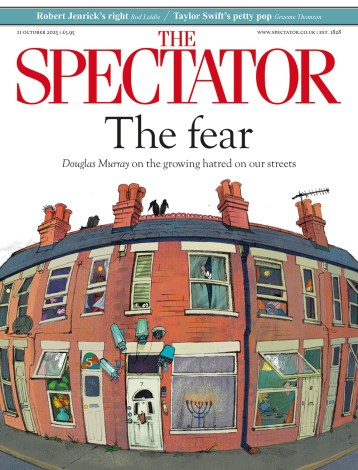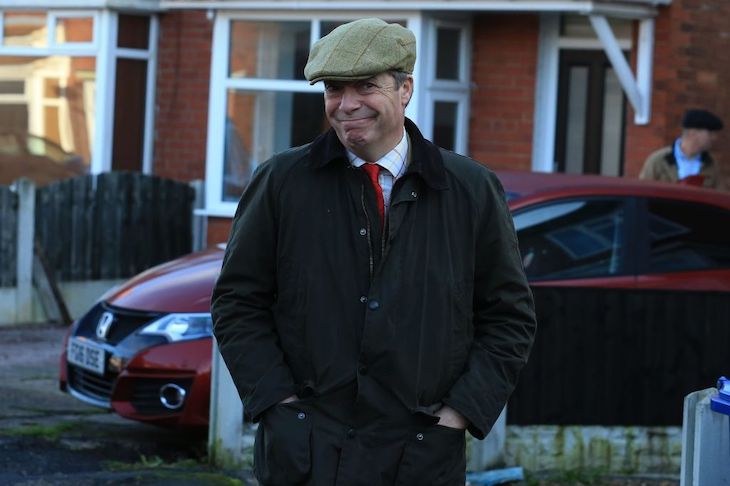When the general election was called by Boris Johnson over a month ago, one truly unpredictable factor in the race was the Brexit party. Would Nigel Farage’s movement end up splitting the Leave vote across the country, thereby denying the Tories a majority? Or would the party mainly damage Labour’s chances, and manage to scoop up scores of seats in dyed-in-the-wool red areas where a Tory candidate would never have a chance?
In the end, neither extreme scenario came to pass. Nigel Farage’s decision to stand down candidates in seats the Tories were defending against Labour meant any splits in the Leave vote were limited. Meanwhile, the Conservatives managed to secure a ‘stonking’ majority of 80, by ploughing through the ‘Red Wall’ of Labour heartlands in the North and the Midlands.
The size of the Tory majority has meant that criticism of the Brexit party has been limited so far. But for future elections, it’s worth taking a look at the impact the Brexit party had on seats the Tories were defending, and those they were hoping to poach from Labour. And, in a worrying sign for Labour, the numbers suggest that the Brexit party’s decision to stand down candidates against the Tories had little impact, while it could have helped the Labour party hold on to more seats than it otherwise would have lost.
Seats the Tories held
When Nigel Farage announced in November that he was standing down his Brexit party candidates in the 317 seats the Tories won in the 2017 general election, he declared that his move would give Boris ‘half a chance’ to win a majority and keep Labour out of power. But analysis by Coffee House suggests that even if the Brexit party had stood against Tory candidates, Labour’s overall weakness means Farage’s party would have made little difference to the election result.
Across the UK there were 212 seats which the Conservatives managed to hold on to from the last election, where Labour were in second place. Of these, 86 had a high Leave vote (above 60 per cent) in 2016 and so were the kind of areas where the Brexit party would be expected to do well, and could have potentially split the Leave vote. But, of all these Leave-leaning areas, the Tory majority in only five seats was less than 10,000 – making it unlikely that the rest would have been lost, even if the Brexit party contested the seats.
There is a fair argument that the Tories only achieved such a high share of the vote in these constituencies because they were the only Leave party on the ballot paper. But across the country, even in Leave strongholds, the Brexit party only managed to achieve more than 10,000 votes in three seats (Hartlepool, Barnsley East and Barnsley Central).
In short, if Farage’s party had stood in every seat in England and Wales (and had a similar level of success to the seats it did stand in) based on these results, it probably would only have led to the Tories losing a handful of MPs to Labour.
Seats the Tories wanted to take
Where the Brexit party can be said to have made a large difference to the result was in seats the Tories were trying to take from Labour, especially in the North and Midlands. Much ink has already been spilled on the comprehensive Tory rout of Labour in its mining and industrial heartlands, but less remarked upon is the effect the Brexit party had in saving Labour in several key seats.
Firstly Nigel Farage’s promises ahead of the election, to only contest seats where the Conservatives had no chance at beating Labour, do not really stack up. The Brexit party, which returned no MPs, came in second place in only two Labour held seats, while the Tories came second in a whopping 176. For the most part, the idea that the Brexit party would act as a plausible alternative to Northern voters squeamish about voting for their Conservative candidate, did not come to pass.
Instead, it seems the party mainly acted as an extra line of defence for the Labour party. In total, Labour managed to hold on to 189 of its seats on election night. Of these 189, there were 38 seats where the combined total of the Brexit party and Conservative votes exceeded the Labour party tally. If all of the Brexit party’s voters had instead backed the Conservatives on Thursday in these areas, then the Tories would have gained an additional 38 seats, and would have sent 403 MPs to the House of Commons. These additional constituencies saved by the Brexit party/Conservative split include Ed Miliband’s seat of Doncaster North, Jon Trickett’s Hemsworth and in Normanton, Pontefract and Castleford, Yvette Cooper, who only hung on to her seat with a threadbare majority of 1,276.
Of course, it is entirely possible that those who backed the Brexit party in these seats had good reasons to avoid the Tories, and would rather have stayed at home than wear a blue rosette. The Brexit party has also argued that it may have split Labour’s vote, allowing the Tories to do better than expected in some seats. In all but three of the 38 seats, Labour lost more voters (since 2017) than the Brexit party gained, suggesting that the Brexit party also cut into the Tory vote.
What’s more, it’s clear from the overall election result that the Conservatives succeeded when it came to convincing swathes of voters to lend their votes to the Tories to get Brexit done. It follows that these Brexit party voters could have followed suit had Farage’s party not been an option.
The fact that so many Labour MPs may have been saved by Nigel Farage’s party will certainly worry Labour ahead of the next general election. It suggests that if, over that period, the Brexit party and Nigel Farage cease to remain an electoral force – and Boris Johnson manages to hold on to Leave voters and the Brexit party’s supporters – the Conservatives will not have to make any gains in Labour heartlands to win an additional 38 seats. They are unlikely to admit it, but Labour MPs could well end up in the strange position of praying for Nigel Farage’s political survival.







Comments